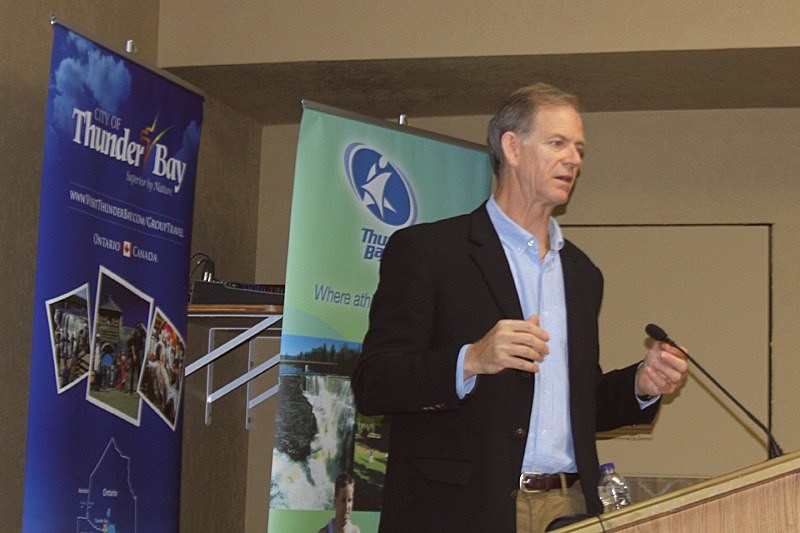Provincial and national experts believe this city has the potential to become a significant sports tourism destination.
The Canadian Sport Tourism Alliance hosted a one-day workshop in the city at the Prince Arthur Hotel Wednesday with Tourism Northwestern Ontario to help show municipalities and events how to take advantage of an industry that generated $3.6 billion in Canada in 2010.
John Cameron, development officer for Tourism Thunder Bay, said the city is well-equipped to continue the trend of hosting major events. In recent years the city has hosted the world junior baseball championships, national university hockey championships, and next year will host a PGA Tour of Canada event.
“Our advantage is that we are in the centre of Canada so we can attract national and international events,” Cameron said. “Thunder Bay, with its location and great international airport with its connectivity and some of the venues that we have here are world-class.”
Providing expertise and guidance were provincial and national sports tourism experts who demonstrated how to create a sports tourism strategy, construct a bid for events, and what kind of events to bid on.
Blair McIntosh, the CEO of Sport Alliance of Ontario, said one of the biggest things municipalities have to do is create a sports tourism strategy.
He said it is not enough to just bid on events with the hopes of landing them, but that each municipality should examine what types of events they are best equipped to host, and what kinds of advantages they have over other potential bidders.
McIntosh recommends that northwestern Ontario communities emphasize the different culture the region presents compared to the rest of the province.
“When you’re going up against a comparative city from southern Ontario they don’t have some of the unique things you do up here,” McIntosh said.
“Northern Ontario has a very unique flavor to it. It has things that are not available down in southern Ontario. I think that’s the thing you really need to focus on when you’re going after bids. Not only do you have first class facilities and accommodations you get to experience the north, which is something not a lot of people get to do on a regular basis.”
Attendees included representatives from communities in the region such as Atikokan, Dryden, Marathon, Sioux Lookout, and the Lac Seul First Nation in addition to organizers of local events such as the Sleeping Giant Loppet.
When it came time to organize the workshop, Cameron said it was vital to make it a region-wide affair to strengthen the abilities of every community to share strategies.
“We really wanted to make this a regional thing,” he said. “It was an opportunity to reach out and get all of the people from northwestern Ontario and see what the capacity for sports tourism is not only in Thunder Bay, but also in Kenora, Fort Frances, Marathon, and Nipigon and see what their opportunities are and maybe we can learn something from each other.”
While sports tourism comes to the limelight with significant one-off events, like the world junior baseball championships held in Thunder Bay in 2010, it is the recurring small-scale events that are the backbone of the industry.
“Sports tourism really comes down to that weekend hockey tournament in Nipigon or Marathon where you get people from out of town traveling to that event for the weekend,” Cameron said. “That’s sports tourism at its basic self.”
Existing events such as the Sleeping Giant Loppet, Firefighters’ Ten Mile Road Race, and the Thunder Bay Marathon: Miles with the Giant that attracted over 900 participants this past weekend are important to have expanded to grow the profile of the city’s sporting scene, says Canadian Sport Tourism Alliance CEO Rick Traer.
“One of the things I suggest is looking at the events that are already occurring in the community,” he said. “They were here first, and maybe learn from them and help them grow their events to a level they haven’t yet achieved.”



